Cure for Eye Pain: Causes, Treatments, and Prevention
What are the causes of eye pain? What are the treatments for eye pain? How can you prevent eye pain? Get the answers to these questions and more in this comprehensive guide.
Causes of Eye Pain
Eye pain can be caused by a variety of factors, both on the surface of the eye and within the eye itself. Some common causes of surface eye pain include:
Foreign Object
The most common cause of eye pain is simply having something, such as an eyelash, piece of dirt, or makeup, in the eye. This can cause irritation, redness, watery eyes, and pain.
Conjunctivitis
Also known as pink eye, conjunctivitis is an infection or inflammation of the conjunctiva, the tissue that lines the front of the eye and the underside of the eyelid. This can cause mild pain, as well as itchiness, redness, and discharge.
Contact Lens Irritation
People who wear contact lenses, especially if they wear them overnight or don’t disinfect them properly, are more susceptible to eye pain caused by irritation or infection.

Corneal Abrasion
A corneal abrasion, or injury to the clear surface of the eye, can cause a sensation of having something in the eye. Treatments that typically remove irritants from the eye, such as flushing with water, won’t ease the pain and discomfort of a corneal abrasion.
Injury
Chemical burns and flash burns to the eye, often from exposure to irritants or intense light sources, can cause significant eye pain.
Blepharitis
Blepharitis is an infection or inflammation of the oil glands on the eyelid’s edge, which can cause pain.
Stye
A blepharitis infection can create a painful, raised bump on the eyelid known as a stye or chalazion. A chalazion is usually not painful, but a stye can be very tender and sensitive to the touch.
Causes of Eye Pain Within the Eye
Eye pain that originates within the eye itself may be caused by the following conditions:
Glaucoma
Glaucoma is a condition where the intraocular pressure, or pressure inside the eye, rises. This can cause eye pain, as well as other symptoms like nausea, headache, and vision loss. Acute angle closure glaucoma is a medical emergency.

Optic Neuritis
Inflammation of the optic nerve, which connects the back of the eye to the brain, can cause eye pain and vision loss.
Sinusitis
An infection of the sinuses can cause pressure to build behind the eyes, leading to eye pain.
Migraines
Eye pain is a common side effect of migraine attacks.
Injury
Penetrating injuries to the eye, such as from being hit by an object or in an accident, can cause significant eye pain.
Iritis
Inflammation of the iris, while uncommon, can cause deep eye pain.
When to Seek Medical Attention
If you experience any of the following symptoms, it’s important to seek immediate medical attention:
- Severe eye pain
- Eye pain caused by trauma or exposure to a chemical or light
- Abdominal pain and vomiting that accompanies eye pain
- Pain so severe it’s impossible to touch the eye
- Sudden and dramatic vision changes
Treatments for Eye Pain
The treatment for eye pain depends on the underlying cause. Common treatments include:
Home Care
Resting the eyes, such as by avoiding screens and allowing the eyes to heal, is often the best way to treat many conditions that cause eye pain.

Glasses
For those who frequently wear contact lenses, switching to glasses can give the corneas time to heal.
Warm Compresses
Applying warm, moist towels to the eyes can help clear clogged oil glands or hair follicles in cases of blepharitis or styes.
Flushing
If a foreign object is in the eye, flushing the eye with water can help remove it.
Preventing Eye Pain
To help prevent eye pain, it’s important to:
- Avoid rubbing your eyes
- Wear protective eyewear when engaging in activities that could cause eye injuries
- Properly care for and disinfect contact lenses
- Maintain good hygiene, such as washing your hands before touching your eyes
- Manage any underlying conditions that may contribute to eye pain, such as migraines or sinusitis
By understanding the causes of eye pain, seeking prompt medical treatment when necessary, and taking steps to prevent eye irritation and injury, you can help keep your eyes healthy and comfortable.
Eye Pain: Causes, Treatments, and Prevention
Surface pain is usually caused by irritation, infection, or trauma. Often, it is easily treated with eye drops or rest. Eye pain deeper in the eye may require more in-depth treatment. Any pain accompanied by vision loss is an emergency.
Eye pain is common, but it’s rarely a symptom of a serious condition. Most often, the pain resolves without medicine or treatment. Eye pain is also known as ophthalmalgia.
Depending on where you experience the discomfort, eye pain can fall into one of two categories: Ocular pain occurs on the eye’s surface, and orbital pain occurs within the eye.
Eye pain that occurs on the surface may be a scratching, burning, or itching sensation. Eye pain that occurs deeper within the eye may feel aching, gritty, stabbing, or throbbing.
Eye pain accompanied by vision loss may be a symptom of an emergency medical issue. Call your ophthalmologist immediately if you begin to lose your vision while experiencing eye pain.
The following may cause eye pain that originates on the surface of the eye:
Foreign object
The most common cause of eye pain is simply having something in your eye. Whether it’s an eyelash, a piece of dirt, or makeup, having a foreign object in the eye can cause irritation, redness, watery eyes, and pain.
Conjunctivitis
The conjunctiva is the tissue that lines the front of the eye and the underside of the eyelid. It can become infected and inflamed. Often, this is caused by an allergy or infection.
Though the pain is usually mild, the inflammation causes itchiness, redness, and discharge in the eye. Conjunctivitis is also called pink eye.
Contact lens irritation
People who wear contact lenses overnight or don’t disinfect their lenses properly are more susceptible to eye pain caused by irritation or infection.
Corneal abrasion
The cornea, the clear surface that covers the eye, is susceptible to injuries. When you have a corneal abrasion, you will feel as if you have something in your eye.
However, treatments that typically remove irritants from an eye, such as flushing with water, won’t ease the pain and discomfort if you have a corneal abrasion.
Injury
Chemical burns and flash burns to the eye can cause significant pain. These burns are often the result of exposure to irritants such as bleach or to intense light sources, such as the sun, tanning booths, or the materials used in arc welding.
Blepharitis
Blepharitis occurs when oil glands on the eyelid’s edge become infected or inflamed. This can cause pain.
Sty
A blepharitis infection can create a nodule or raised bump on the eyelid. This is called a sty or a chalazion. A sty can be very painful, and the area around the sty is usually very tender and sensitive to touch. A chalazion isn’t usually painful.
Eye pain felt within the eye itself may be caused by the following conditions:
Glaucoma
This condition occurs as intraocular pressure, or pressure inside the eye, rises. Additional symptoms caused by glaucoma include nausea, headache, and loss of vision.
Additional symptoms caused by glaucoma include nausea, headache, and loss of vision.
A sudden rise in pressure, called acute angle closure glaucoma, is an emergency, and immediate treatment is needed to prevent permanent vision loss.
Optic neuritis
You may experience eye pain accompanied by a loss of vision if the nerve that connects the back of the eyeball to the brain, known as the optic nerve, becomes inflamed. An autoimmune disease or a bacterial or viral infection may cause the inflammation.
Sinusitis
An infection of the sinuses can cause pressure behind the eyes to build. As it does, it can create pain in one or both eyes.
Migraines
Eye pain is a common side effect of migraine attacks.
Injury
Penetrating injuries to the eye, which can occur when a person is hit with an object or is involved in an accident, can cause significant eye pain.
Iritis
While uncommon, inflammation in the iris can cause pain deep inside the eye.
If you begin experiencing vision loss in addition to eye pain, this may be a sign of an emergency situation. Other symptoms that need immediate medical attention include:
- severe eye pain
- eye pain caused by trauma or exposure to a chemical or light
- abdominal pain and vomiting that accompanies eye pain
- pain so severe it’s impossible to touch the eye
- sudden and dramatic vision changes
The treatment for eye pain depends on the cause of the pain. The most common treatments include:
Home care
The best way to treat many of the conditions that cause eye pain is to allow your eyes to rest. Staring at a computer screen or television can cause eyestrain, so your doctor may require you to rest with your eyes covered for a day or more.
Glasses
If you frequently wear contact lenses, give your corneas time to heal by wearing your glasses.
Warm compress
Doctors may instruct people with blepharitis or a sty to apply warm, moist towels to their eyes. This will help to clear the clogged oil gland or hair follicle.
This will help to clear the clogged oil gland or hair follicle.
Flushing
If a foreign body or chemical gets into your eye, flush your eye with water or a saline solution to wash the irritant out.
Antibiotics
Antibacterial drops and oral antibiotics may be used to treat infections of the eye that are causing pain, including conjunctivitis and corneal abrasions.
Antihistamines
Eye drops and oral medicines can help ease the pain associated with allergies in the eyes.
Eye drops
People with glaucoma may use medicated eye drops to reduce the pressure building in their eyes.
Corticosteroids
For more serious infections, such as optic neuritis and anterior uveitis (iritis), your doctor may give you corticosteroids.
Pain medications
If the pain is severe and causes an interruption to your day-to-day life, your doctor may prescribe a pain medicine to help ease the pain until the underlying condition is treated.
Surgery
Surgery is sometimes needed to repair damage done by a foreign body or burn. However, this is rare. Individuals with glaucoma may need to have a laser treatment to improve drainage in the eye.
However, this is rare. Individuals with glaucoma may need to have a laser treatment to improve drainage in the eye.
Most eye pain will fade with no or mild treatment. Eye pain and the underlying conditions that cause it rarely lead to permanent damage to the eye.
However, that’s not always the case. Some conditions that cause eye pain may also cause problems that are more serious if they aren’t treated.
For example, the pain and symptoms caused by glaucoma are a sign of an impending problem. If not diagnosed and treated, glaucoma can cause vision problems and eventually total blindness.
Your vision is nothing to gamble on. If you begin to experience eye pain that isn’t caused by something like an eyelash in the eye, make an appointment to see your eye doctor as soon as possible.
Eye pain prevention starts with eye protection. The following are ways you can prevent eye pain:
Wear protective eyewear
Prevent many causes of eye pain, such as scratches and burns, by wearing goggles or safety glasses when playing sports, exercising, mowing the lawn, or working with hand tools.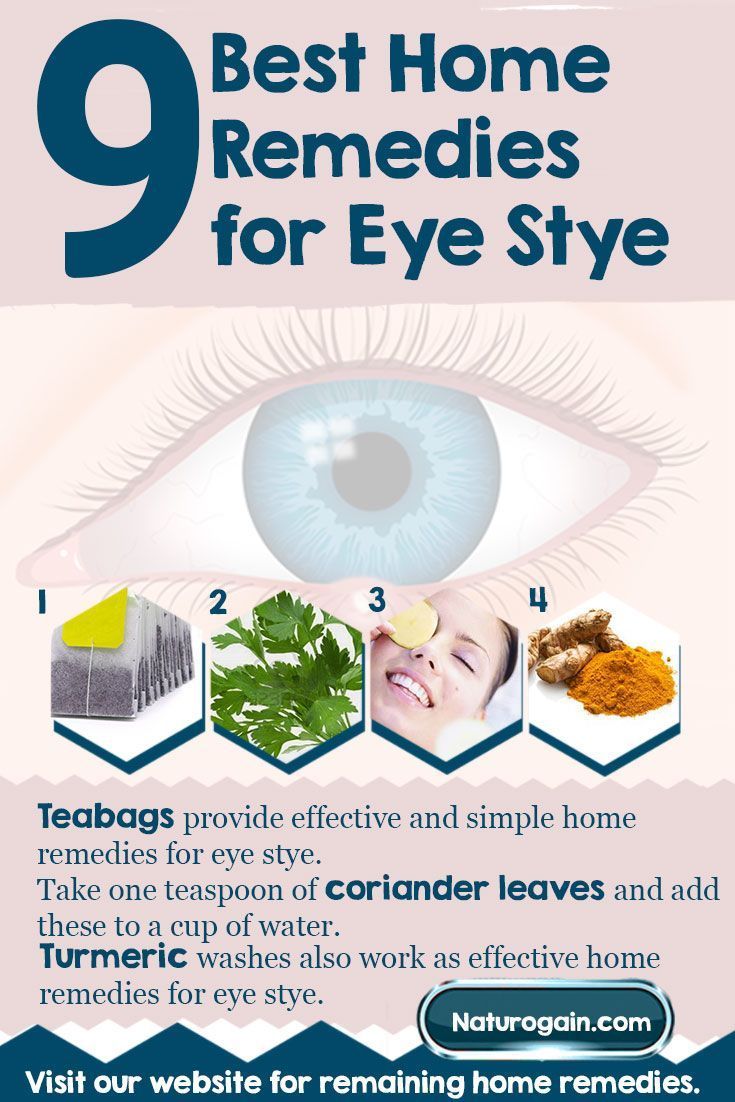
Construction workers, welders, and people who work around flying objects, chemicals, or welding gear should always wear protective eye gear.
Handle chemicals with caution
Direct chemicals and potent agents such as household cleaners, detergents, and pest control. Spray away from your body when using them.
Exercise caution with children’s toys
Avoid giving your child a toy that can injure their eyes. Toys with spring-loaded components, toys that shoot, and toy swords, guns, and bouncing balls can all injure a child’s eye.
Contact lens hygiene
Clean your contacts thoroughly and routinely. Wear your glasses on occasion to allow your eyes time to rest. Don’t wear contacts longer than they are intended to be worn or used.
Eye Pain: Causes, Treatments, and Prevention
Surface pain is usually caused by irritation, infection, or trauma. Often, it is easily treated with eye drops or rest. Eye pain deeper in the eye may require more in-depth treatment. Any pain accompanied by vision loss is an emergency.
Any pain accompanied by vision loss is an emergency.
Eye pain is common, but it’s rarely a symptom of a serious condition. Most often, the pain resolves without medicine or treatment. Eye pain is also known as ophthalmalgia.
Depending on where you experience the discomfort, eye pain can fall into one of two categories: Ocular pain occurs on the eye’s surface, and orbital pain occurs within the eye.
Eye pain that occurs on the surface may be a scratching, burning, or itching sensation. Eye pain that occurs deeper within the eye may feel aching, gritty, stabbing, or throbbing.
Eye pain accompanied by vision loss may be a symptom of an emergency medical issue. Call your ophthalmologist immediately if you begin to lose your vision while experiencing eye pain.
The following may cause eye pain that originates on the surface of the eye:
Foreign object
The most common cause of eye pain is simply having something in your eye. Whether it’s an eyelash, a piece of dirt, or makeup, having a foreign object in the eye can cause irritation, redness, watery eyes, and pain.
Conjunctivitis
The conjunctiva is the tissue that lines the front of the eye and the underside of the eyelid. It can become infected and inflamed. Often, this is caused by an allergy or infection.
Though the pain is usually mild, the inflammation causes itchiness, redness, and discharge in the eye. Conjunctivitis is also called pink eye.
Contact lens irritation
People who wear contact lenses overnight or don’t disinfect their lenses properly are more susceptible to eye pain caused by irritation or infection.
Corneal abrasion
The cornea, the clear surface that covers the eye, is susceptible to injuries. When you have a corneal abrasion, you will feel as if you have something in your eye.
However, treatments that typically remove irritants from an eye, such as flushing with water, won’t ease the pain and discomfort if you have a corneal abrasion.
Injury
Chemical burns and flash burns to the eye can cause significant pain.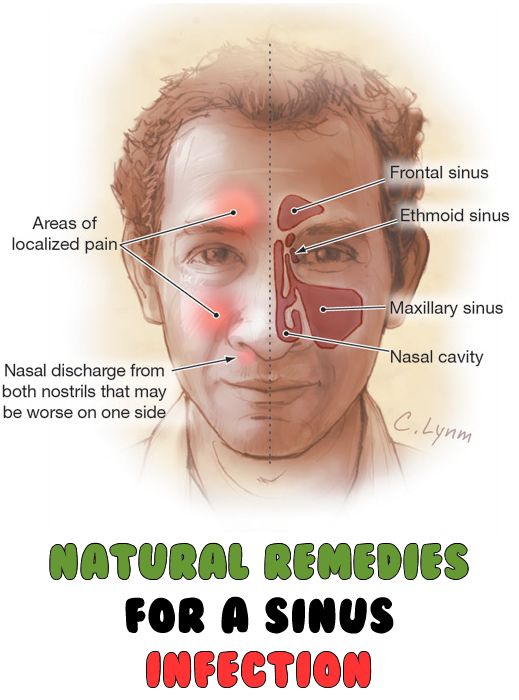 These burns are often the result of exposure to irritants such as bleach or to intense light sources, such as the sun, tanning booths, or the materials used in arc welding.
These burns are often the result of exposure to irritants such as bleach or to intense light sources, such as the sun, tanning booths, or the materials used in arc welding.
Blepharitis
Blepharitis occurs when oil glands on the eyelid’s edge become infected or inflamed. This can cause pain.
Sty
A blepharitis infection can create a nodule or raised bump on the eyelid. This is called a sty or a chalazion. A sty can be very painful, and the area around the sty is usually very tender and sensitive to touch. A chalazion isn’t usually painful.
Eye pain felt within the eye itself may be caused by the following conditions:
Glaucoma
This condition occurs as intraocular pressure, or pressure inside the eye, rises. Additional symptoms caused by glaucoma include nausea, headache, and loss of vision.
A sudden rise in pressure, called acute angle closure glaucoma, is an emergency, and immediate treatment is needed to prevent permanent vision loss.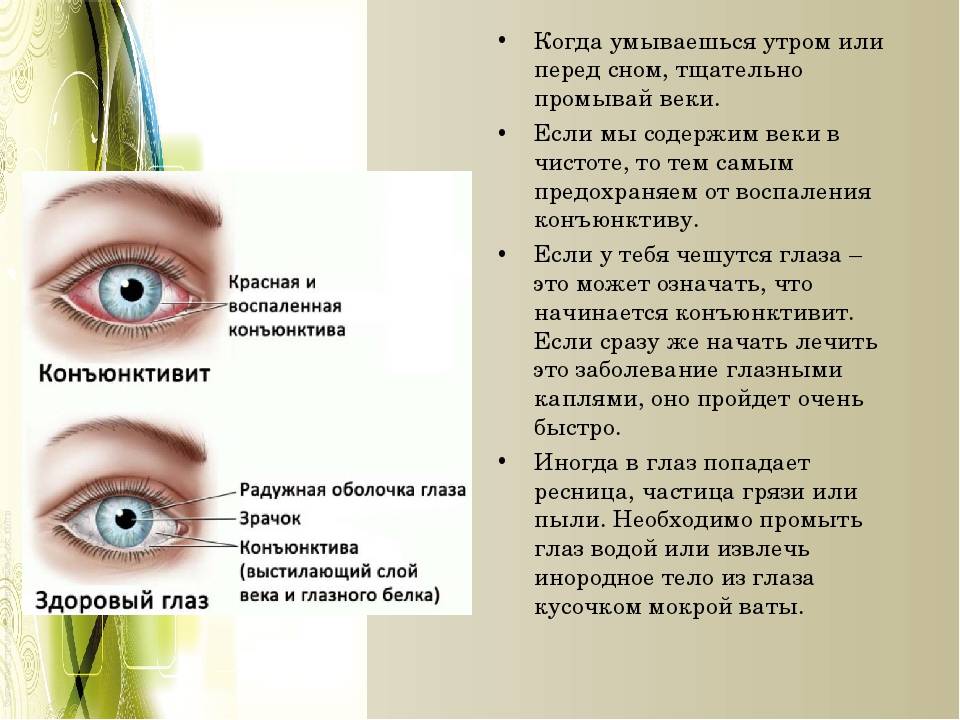
Optic neuritis
You may experience eye pain accompanied by a loss of vision if the nerve that connects the back of the eyeball to the brain, known as the optic nerve, becomes inflamed. An autoimmune disease or a bacterial or viral infection may cause the inflammation.
Sinusitis
An infection of the sinuses can cause pressure behind the eyes to build. As it does, it can create pain in one or both eyes.
Migraines
Eye pain is a common side effect of migraine attacks.
Injury
Penetrating injuries to the eye, which can occur when a person is hit with an object or is involved in an accident, can cause significant eye pain.
Iritis
While uncommon, inflammation in the iris can cause pain deep inside the eye.
If you begin experiencing vision loss in addition to eye pain, this may be a sign of an emergency situation. Other symptoms that need immediate medical attention include:
- severe eye pain
- eye pain caused by trauma or exposure to a chemical or light
- abdominal pain and vomiting that accompanies eye pain
- pain so severe it’s impossible to touch the eye
- sudden and dramatic vision changes
The treatment for eye pain depends on the cause of the pain. The most common treatments include:
The most common treatments include:
Home care
The best way to treat many of the conditions that cause eye pain is to allow your eyes to rest. Staring at a computer screen or television can cause eyestrain, so your doctor may require you to rest with your eyes covered for a day or more.
Glasses
If you frequently wear contact lenses, give your corneas time to heal by wearing your glasses.
Warm compress
Doctors may instruct people with blepharitis or a sty to apply warm, moist towels to their eyes. This will help to clear the clogged oil gland or hair follicle.
Flushing
If a foreign body or chemical gets into your eye, flush your eye with water or a saline solution to wash the irritant out.
Antibiotics
Antibacterial drops and oral antibiotics may be used to treat infections of the eye that are causing pain, including conjunctivitis and corneal abrasions.
Antihistamines
Eye drops and oral medicines can help ease the pain associated with allergies in the eyes.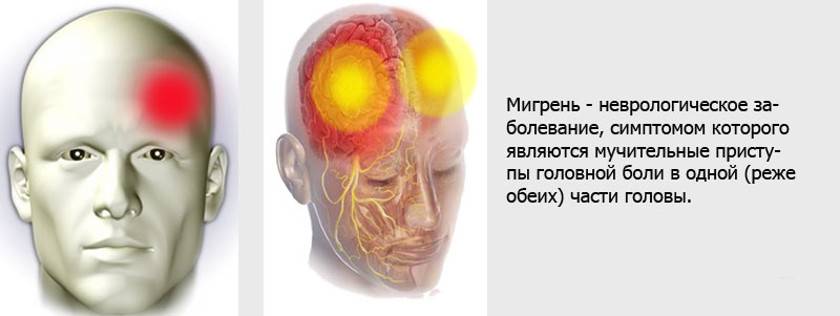
Eye drops
People with glaucoma may use medicated eye drops to reduce the pressure building in their eyes.
Corticosteroids
For more serious infections, such as optic neuritis and anterior uveitis (iritis), your doctor may give you corticosteroids.
Pain medications
If the pain is severe and causes an interruption to your day-to-day life, your doctor may prescribe a pain medicine to help ease the pain until the underlying condition is treated.
Surgery
Surgery is sometimes needed to repair damage done by a foreign body or burn. However, this is rare. Individuals with glaucoma may need to have a laser treatment to improve drainage in the eye.
Most eye pain will fade with no or mild treatment. Eye pain and the underlying conditions that cause it rarely lead to permanent damage to the eye.
However, that’s not always the case. Some conditions that cause eye pain may also cause problems that are more serious if they aren’t treated.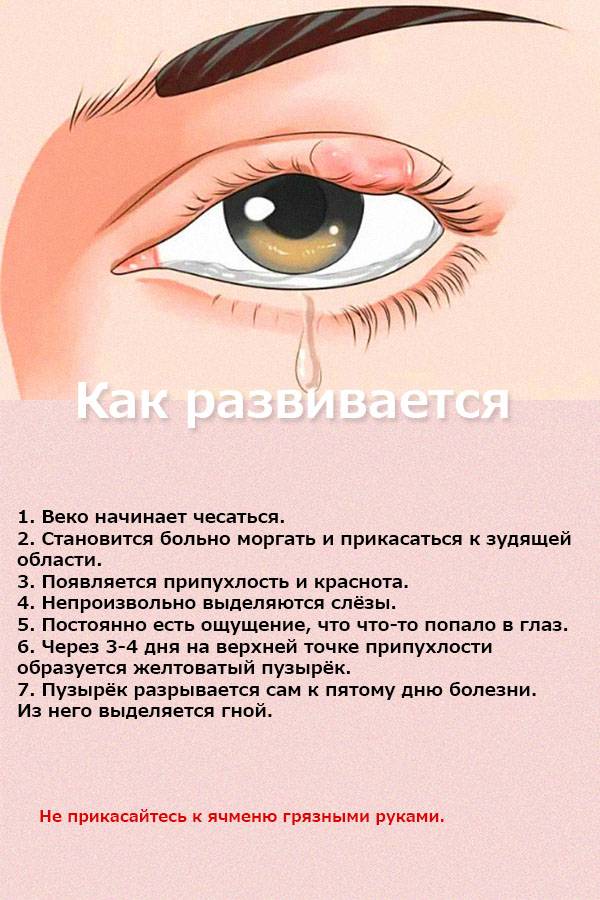
For example, the pain and symptoms caused by glaucoma are a sign of an impending problem. If not diagnosed and treated, glaucoma can cause vision problems and eventually total blindness.
Your vision is nothing to gamble on. If you begin to experience eye pain that isn’t caused by something like an eyelash in the eye, make an appointment to see your eye doctor as soon as possible.
Eye pain prevention starts with eye protection. The following are ways you can prevent eye pain:
Wear protective eyewear
Prevent many causes of eye pain, such as scratches and burns, by wearing goggles or safety glasses when playing sports, exercising, mowing the lawn, or working with hand tools.
Construction workers, welders, and people who work around flying objects, chemicals, or welding gear should always wear protective eye gear.
Handle chemicals with caution
Direct chemicals and potent agents such as household cleaners, detergents, and pest control. Spray away from your body when using them.
Exercise caution with children’s toys
Avoid giving your child a toy that can injure their eyes. Toys with spring-loaded components, toys that shoot, and toy swords, guns, and bouncing balls can all injure a child’s eye.
Contact lens hygiene
Clean your contacts thoroughly and routinely. Wear your glasses on occasion to allow your eyes time to rest. Don’t wear contacts longer than they are intended to be worn or used.
Painkiller drops – medicine for the eyes. Portal vseozrenii – all about eye drops and tablets.
Article updated on 12/28/2019
Anesthetic eye drops should be used strictly under medical supervision
Contents worth dripping anesthetic drops
1/5
Types of pain drops
Eye pain drops should be used strictly under medical supervision
Eye pain drops act locally to block pain in the nerve endings of the eye.
According to the mechanism of action, they are divided into two main groups:
- Anesthetic drops
- Non-steroidal anti-inflammatory drops
2/5
Anesthetic eye drops
Anesthetic pain drops for the eyes block nerve conduction for a certain time. The drugs in this group include: Lidocaine, Inocaine, Alkain, etc. The analgesic effect occurs 1-2 minutes after application and lasts from 15-20 minutes.
These pain drops are used in the following cases:
- Before removal of foreign bodies from the surface of the eye
- During diagnostic procedures (gonioscopy, contact tonometry, Schirmer test)
- As first aid for eye injuries
- In eye surgery for superficial anesthesia
Pain drops for the eyes should be used strictly under medical supervision.
3/5
When not to administer anesthetic drops
Do not administer topical anesthetic drops alone when the cause of eye pain is unknown
Do not administer local anesthetic drops in this group when the cause of ocular pain is unknown. With prolonged use, local anesthetics cause severe and irreversible damage to the cornea.
With prolonged use, local anesthetics cause severe and irreversible damage to the cornea.
Some patients with eye pain of neuralgic origin instill these pain drops without a doctor’s prescription. Unfortunately, this often leads to clouding of the cornea and loss of vision.
4/5
Non-steroidal anti-inflammatory drops
Non-steroidal anti-inflammatory drops have analgesic and anti-inflammatory effects. The most common drugs in this group are Diclofenac, Broxinac, Indocollir.
The mechanism of action is fundamentally different from local anesthetics. It consists in reducing the synthesis of substances that cause pain and inflammation. Therefore, the analgesic effect of these drops is not observed immediately, but some time after the start of their use.
These anesthetic eye drops are prescribed in the following cases:
- After eye surgery
- To relieve pain after laser surgery
- In inflammatory eye diseases (iridocyclitis, scleritis, etc.
 )
)
9000 2 5/5
When do not drip non-steroidal anti-inflammatory eye drops
Slight blurring and loss of vision may occur when using eye painkiller drops for the eyes
Do not instill anesthetic eye drops in this group if you are allergic to acetylsalicylic acid. Use with caution in inflammation of the cornea.
Please be aware that slight blurring and blurring of vision may occur when using these anesthetic eye drops.
It must be remembered that most nonsteroidal eye drops have serious (often irreversible) side effects. Self-administration of such drugs is unacceptable.
Was the article helpful?
NoYes
Eye drops – relief from burning and dry eyes
Contents
Symptoms
Treatment of pain in the eyes
General recommendations
Diagnostics
Prevention
Burning, itching in the eyes and an unpleasant feeling of dryness is one of the symptoms of possible problems.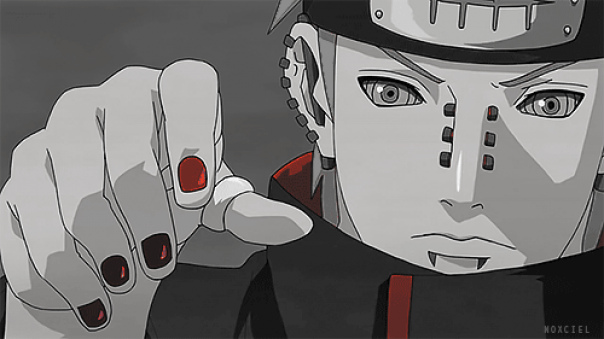 An uncomfortable state can be a signal of the onset of a serious illness, banal overwork, or information about the need to replace the brand of contact lenses. Let’s figure out what eye drops are for, and whether they can be limited to avoiding burning and discomfort.
An uncomfortable state can be a signal of the onset of a serious illness, banal overwork, or information about the need to replace the brand of contact lenses. Let’s figure out what eye drops are for, and whether they can be limited to avoiding burning and discomfort.
Symptoms
Stinging and burning in the eyes, which in itself is a typical symptom of some ophthalmic diseases, usually goes in tandem with the following symptoms:
- redness of the conjunctiva;
- vascular changes;
- burning sensation in the eyes and tearing;
- reduced visual acuity and quality;
- Headache associated with severe eye strain.
Causes of pain
Pain in the eyes can be experienced for many reasons. For example, due to excessively bright light, especially in winter or in the mountains. In this situation, to get rid of the symptom, it is enough to protect the cornea with sunglasses and apply moisturizing drops in case of irritation.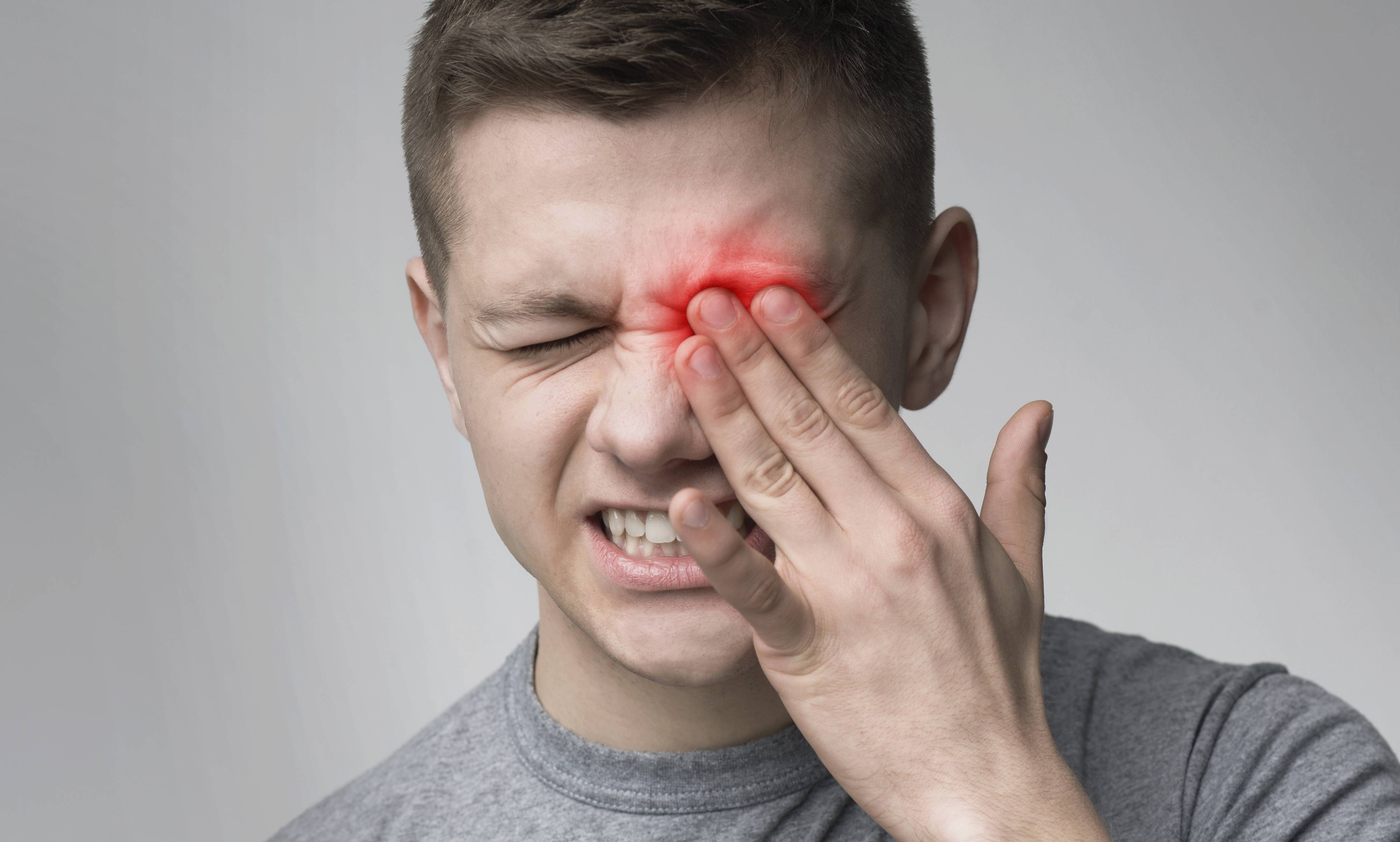 But not all reasons are so harmless. Often pain in the eyes is caused by serious diseases, lifestyle and other factors. Consider some of them:
But not all reasons are so harmless. Often pain in the eyes is caused by serious diseases, lifestyle and other factors. Consider some of them:
Inflammatory conditions
Inflammation of the mucous membrane – conjunctiva, in addition to burning, may be accompanied by swelling of the eyelids, pus. And with attacks of trigeminal neuralgia, a sudden burning pain is added to the cramps.
Viruses and infections
Discomfort in the eyes can provoke many viral and bacterial infectious diseases that are not directly related to ophthalmology. So, a feeling of sand sometimes occurs during acute respiratory diseases, influenza, measles, if the sick person does not comply with hygiene standards, allowing viruses or bacteria to enter the mucous membrane through the hands. For the same reason, tick parasitism on the face with demodicosis can be accompanied by swelling and a burning sensation in the eyes.
Dry eye syndrome
This condition, characterized by a decrease in the natural level of moisture on the mucous membrane, is often diagnosed in IT workers or those who, due to their profession, spend a long time in front of a screen or deal with small details. The visual muscles, fixed in one state, tense, this disrupts normal blood flow, depriving the cells of the necessary oxygen supply. Due to increased concentration, a person tries to blink less often, which causes dryness of the sclera. Without periodic breaks for rest, such work eventually leads to constant tension.
The visual muscles, fixed in one state, tense, this disrupts normal blood flow, depriving the cells of the necessary oxygen supply. Due to increased concentration, a person tries to blink less often, which causes dryness of the sclera. Without periodic breaks for rest, such work eventually leads to constant tension.
Injuries
With mechanical damage to the outer shell, pain becomes a logical consequence. In addition, similar sensations cause:
- Dust, sand, acrid smoke.
- Contact with the mucous membrane of any foreign body: a piece of tissue, eyelashes or metal shavings.
- Chemical Exposure: Vapors from harsh household chemicals affect the ability to see, causing redness, tearing, and pain
- Tattoo done by non-professionals or using poor quality materials.
Allergy
The reaction of the body to allergens is manifested not only by a stuffy nose, but also by redness of the conjunctiva, heavy swollen eyelids, tearing and itching.
Incorrect selection of optics, lenses
Spectacles with lenses must be selected according to the type of vision and compatibility. Inappropriate or low-quality optics causes:
- Corneal hypoxia and further reduction in visual acuity.
- Allergic reaction to ingredients in contact lens solutions.
- Disturbances in the work of the lacrimal glands and, as a result, the occurrence of pain, cutting sensations.
- Irritation and injury to the surface of the cornea.
It is important to know that due to individual characteristics, in particular the increased sensitivity of the cornea, some people, in principle, cannot use contact optics, no matter how high-quality it is.
Headaches
Cluster (bundle) cephalalgia occurs infrequently. Pain in the upper part of the skull and accompanying discomfort in the organs of vision are usually stimulated by:
- smoking and drinking alcohol;
- hypothalamic dysfunction;
- malfunctions of the autonomic nervous system;
- vascular pathologies.

Intraocular pressure
Increased ophthalmotonus or pressure in the eyeball, together with clouding and pain, is a characteristic sign of glaucoma, a dangerous ophthalmic pathology leading to total blindness. With these symptoms, it is impossible to postpone a visit to the doctor.
Pain in the morning
A similar problem is especially familiar:
- women who go to bed without washing off their make-up;
- elderly patients;
- for those who like to read for a long time in the twilight or sit at the screen of a computer, smartphone
Eye pain treatment
Eye drops
This type of medicine effectively relieves symptoms by quickly helping the visual muscles to relax. What drops to take in a pharmacy? It is important that the choice of drug occurs during a consultation with an ophthalmologist, because different drugs treat different pathologies.
Moisturizing from Solopharm:
- Inexpensive eye drops Gilan Comfort or Ultra Comfort are suitable to protect dryness and eliminate cutting sensations. Thanks to the sodium hyaluronate solution included in the composition, a thin film is formed on the surface of the cornea, which protects the eyes from drying out, irritation and the development of inflammation. Gilan ophthalmic solution starts working immediately after application. The drug is compatible with all types of contact lenses, it is allowed during pregnancy, and thanks to the convenient form of release, it is a pleasure to drip Gilan.
- Aqua Optic Aqua Optic is a unique multifunctional solution for lenses designed for quality daily care of all types of contact lenses. The agent of hyaluronic and succinic acid in the composition not only reliably disinfects optics, but also takes care of eye health, moisturizing, reducing the risk of hypoxia.

Ointments
If discomfort is caused by pathogenic microorganisms and the inflammation they trigger, ophthalmologists can prescribe an ointment with a therapeutic antibacterial effect.
In the presence of microtraumas, chemical burns, ointments with restorative, healing properties are used.
As a medical support in the treatment of fungal, infectious and viral diseases
General recommendations
For eye comfort, it is necessary to reduce the load placed on them, treat viral and infectious diseases in a timely manner. Always wear sunglasses with UV protection when traveling in sunny countries.
If you wear contact lenses due to the condition of your eyesight, work frequently and concentratedly at the computer, drive a vehicle, doctors recommend supplementing your cosmetic bag with moisturizing eye drops. This foresight will help at the right time to protect the organs of vision from fatigue and pain.
Life hacks to quickly alleviate the condition:
- during the day, arrange an hour detox from all gadgets;
- take short but frequent breaks from work, during which dim the lights, close your eyes, relax;
- ventilate and humidify the place where you are;
- perform eye exercises;
- go for a walk;
- wash with warm water.

Diagnosis
An ophthalmologist or therapist is engaged in identifying the cause of a symptom if an unpleasant feeling when it hurts the eyes is a consequence of a respiratory disease.
Diagnosis is made on the basis of:
- Interviews with the patient and identification of hereditary factors, existing chronic diseases and additional symptoms that may seem obscure.
- Examination of the applicant using an ophthalmoscope. The method allows you to study the state of the vessels of the fundus, retina, cornea.
- Examination of the patient’s vision.
- Laboratory examinations, in particular scraping from the surface of the conjunctiva.
- Basic health check: appointment for general blood and urine tests. Measurement of temperature and blood pressure.
Prevention
The basic rules for the prevention of visual pathologies are obvious and understandable.
It has long been known that the eyes are the window to the soul. However, the organs of vision are not only a mirror, but also a door for all kinds of external stimuli: diseases, microparticles, dirty and dry air, and poor-quality cosmetics.
However, the organs of vision are not only a mirror, but also a door for all kinds of external stimuli: diseases, microparticles, dirty and dry air, and poor-quality cosmetics.
Therefore, in order to maintain health, beauty and the ability to see, it is better to follow the general recommendations:
- Balance work and leisure. You need to understand that social networks and computer games are not a vacation, but rather work for your eyes, so it’s better to find time in a busy schedule for a regular walk in the park.
- Choose monitors with protection, and lenses, glasses – with suppression of computer influence.
- Contact optics must be properly stored and changed in a timely manner.
- Decorative cosmetics and creams must be fresh, anti-allergic. To prevent infections, it is better to protect the face area from foreign bacteria as much as possible; it is not recommended to use other people’s things
- Fresh food, with a sufficient amount of vitamins, trace elements and beneficial acids is the key to health.


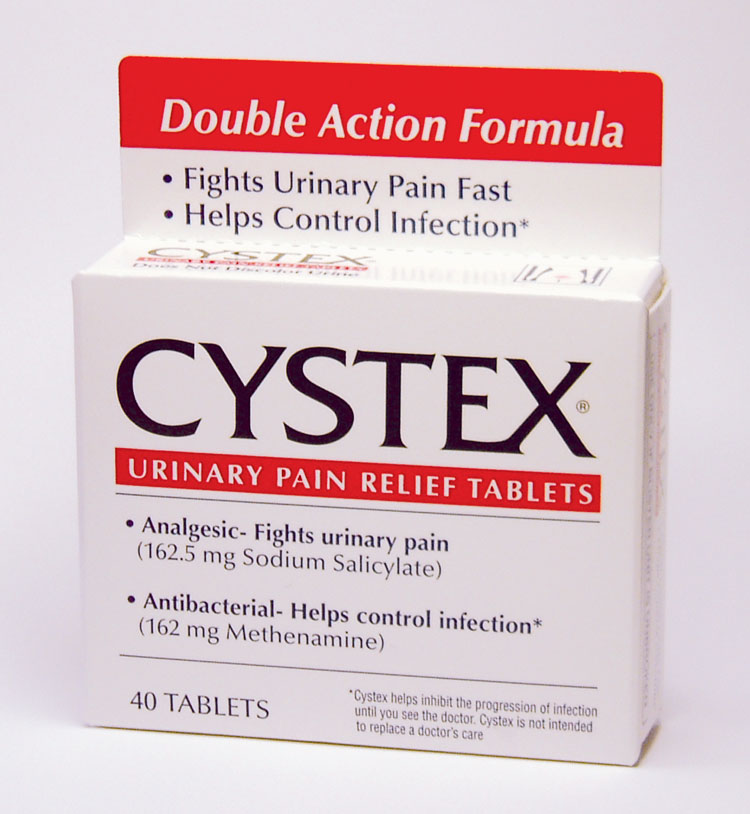 )
)


